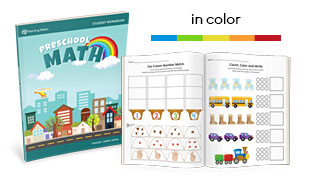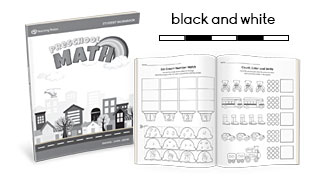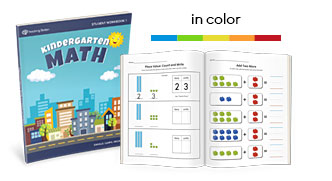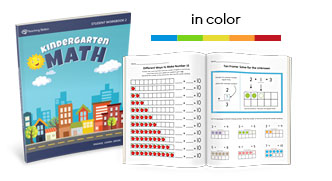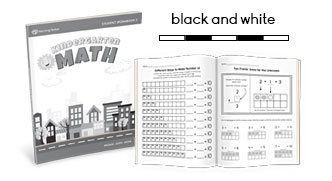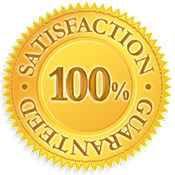Effectively Teach Preschool and Kindergarten Math Skills With Easy-To-Use Exercises and Activities Students Love

Listen to what Mr. Nelson Mandela had to say...
3 Quick Reminders
- It's easy to forget that children are like sponges. They soak up whatever is in front of them (no matter what developmental stage they are in).
- Your child doesn't need to be Einstein to start learning mathematics at any age. And that's because they are born with math hardwired into their genetic DNA.
- If you want students to succeed, give them a crystal clear pathway and quality materials to guide each step of their learning journey (at a bare minimum).
Makes complete sense, right?
Well, That's Where We Get Into Trouble
Here's the thing.
Finding a quality pre-k and kindergarten mathematics program comes with BIG challenges like:
| Out-of-date curricula that fall short of today's academic standards. | |
| Repetitive and boring materials which lead to learning delay. | |
| Missing fun, practical activities, and exercises to stimulate curiosity. | |
| Busy work that lacks variety and fails to engage a child's imagination. | |
| Teaching methods that focus solely on memorization instead of encouraging a child to develop the ability to solve problems by thinking through possible solutions. |
A Lot of Parents Didn't Know
According to the Seattle Times news article in 2013, parents didn't know how much was expected at the end of the kindergarten. "Kindergarten is like first grade was seven or eight years ago...." (yikes)
The article continues to explain that the fall 2012 statewide kindergarten data showed many 5 and 6-year-olds do not have the skills expected for entering school levels.
And guess what... the biggest deficit was in math!
Only 52 percent of the 21,811 kids tested have the math abilities they should have.
Wow, that was more than four years ago...
and teaching number sense is one of the keys to prepare your child in mathematics.
Give Them a Head Start
Number sense... ever hear of it?
Number sense refers to your student's fluidity and flexibility with numbers - It helps them understand the relationship of numbers one to another (not just memorization).
Researchers consider number sense of prime importance for children in early elementary education, and the National Council of Teachers of Mathematics made number sense a focus area of pre-k through 2nd-grade mathematics education.
Good teachers and parents everywhere realize that finding a quality math program can be quite challenging.
Plus who has the time to put it all together themselves?
However, now the program is done for you... and your students will love it!
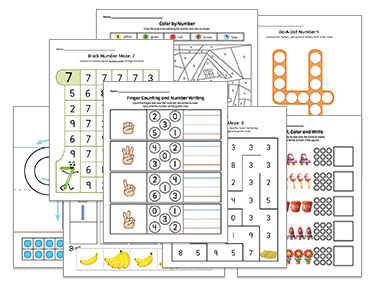
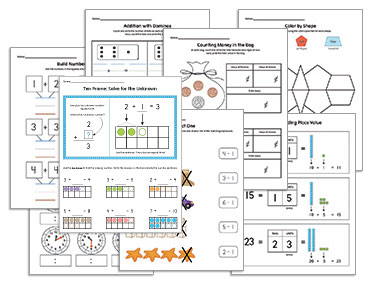
And the best part is that you don't have to wait to get started.
Who Is the MTS Math Program For?
The MTS Math Program is designed for any student ready to learn Preschool and Kindergarten mathematics. The program is helpful to all ages based on their academic level and progress.
The program is broken down into two levels:
Preschool Level
Students are introduced to the fundamental math concepts including:
| Recognize basic shapes including squares, circles, triangles, and rectangles. | |
| Develop the ability to differentiate between objects by sorting and comparing. | |
| Describe the relative position of objects using terms such as above, below, on top, under, beside, in front, next to, and behind. | |
| Learn to compare objects by size and length. | |
| Develop an understanding of patterns along with the ability to copy and extend patterns. | |
| Recognize numbers 0 to 10. | |
| Understand and identify quantities (e.g., the number "3" represents three objects). | |
| Develop an understanding of math terms such as more than, less than, and equal to. | |
| Count to 10 while understanding the relationship a number has with one another (e.g., the number "3" is greater than "2" and less than 4). | |
| Demonstrate correct number formation using the continuous stroke method. | |
| Understand the different number styles and how to recognize them. | |
| Develop an attention to detail, precision, and accuracy through number sense activities. |
Kindergarten Level - Part 1
Part one of the kindergarten level sets the foundation of large numbers through place value, basic addition and skip counting. The major skills and concepts include:
| Recognize numbers 0 to 100. | |
| Understand and identify number sequencing (before, between and after) up to 100. | |
| Recognize ordinal position and numbers. | |
| Count by 1s to 100 while understanding the relationship a number has with one another (e.g., the number "50" is greater than "20" and less than "100"). | |
| Identify basic shapes including squares, circles, triangles, and rectangles. | |
| Demonstrate correct number formation using the continuous stroke method. | |
| Gain a strong foundation for place value by working with tens and ones. | |
| Understand math symbols (e.g., plus sign and equal sign) along with math expressions (e.g., 1 + 2 ). | |
| Develop the conceptual understanding of addition - creating new numbers. | |
| Learn to add numbers within 10 using pictures, a number line, and other visual counters. | |
| Develop an attention for detail, precision and accuracy through number sense activities. | |
| Learn to count by 2s and 10s. |
Kindergarten Level - Part 2
In part two of the kindergarten level, students gain critical thinking and analytical skills that create lifelong logic patterns to help comprehend advanced mathematical concepts. The major skills and concepts include:
| Learn to compose and decompose numbers within 10 (e.g., 4 + 3 = 7 and 7 = 4 + 3). | |
| Develop number sense by the use of numbers in different ways and situations. | |
| Make sense of word problems and develop the skill to solve for the unknown number. | |
| Learn and apply math rules to solve basic addition and subtraction problems. | |
| Understand and solve number sentences (e.g., 2 + 3 = 5 ) within the context of 10. | |
| Apply different techniques to comprehend, interpret, evaluate, and solve math problems. | |
| Learn to count by 5s. | |
| Learn and use tally marks to quickly count by 5s and record ongoing results. | |
| Identify and describe two-dimensional shapes including pentagon, hexagon, parallelogram, and trapezoid. | |
| Identify and decompose two-dimensional shapes. | |
| Develop a basic understanding of geometric terms such as side, vertex (corners) and parallel lines. | |
| Develop the conceptual understanding of subtraction as taking apart (or taking from) a number. | |
| Learn to subtract numbers within 10 using pictures, a ten-frame, and other visual counters. | |
| Recognize pennies, nickels, dimes, quarters and identify their values. | |
| Understand how to count money using coins. | |
| Recognize three-dimensional shapes including sphere, cube, cylinder, pyramid, cone, triangular prism, and rectangular prism. | |
| Understand the difference between two and three-dimensional shapes. | |
| Understand how time is measured, how many hours are in a day and how many minutes are in an hour. | |
| Read time using a digital and analog clock. | |
| Learn the days of the week, months of the year and their ordinal sequence. |
Each student workbook is packed with attention-grabbing worksheets and engaging activities including puzzles, mazes, and games.
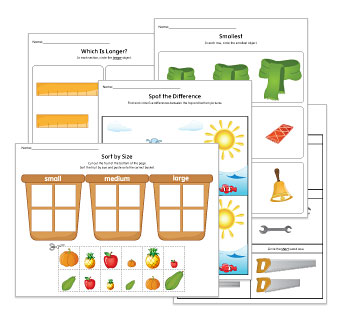
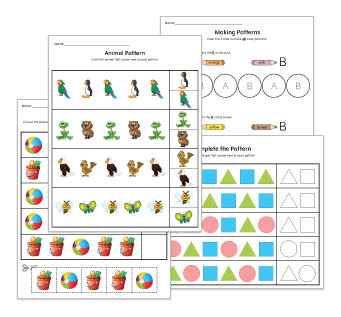
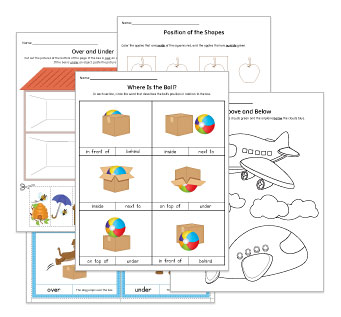
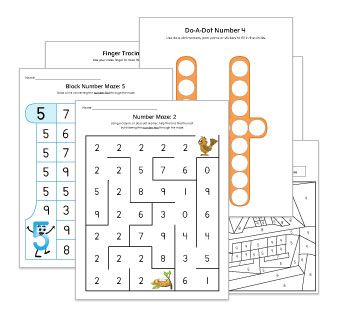
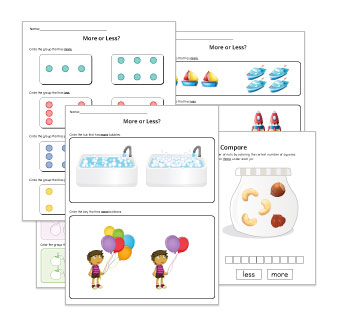
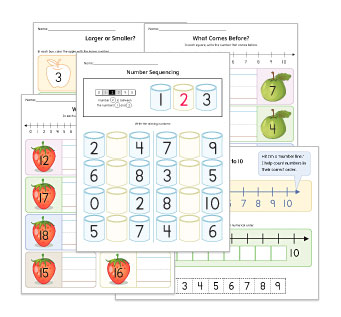
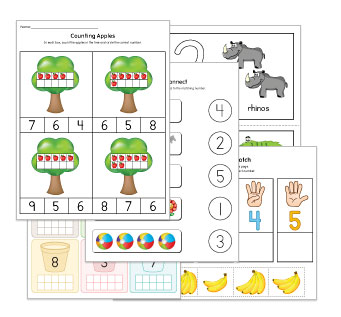
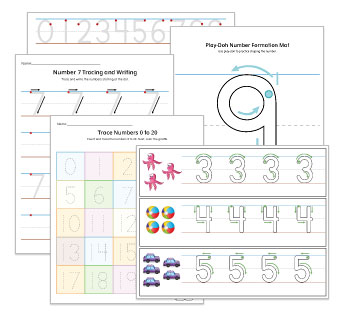
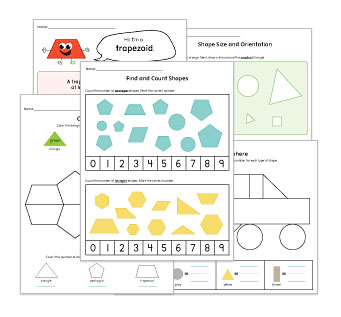
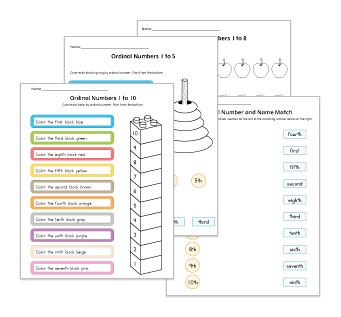
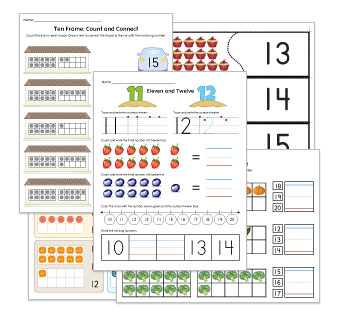
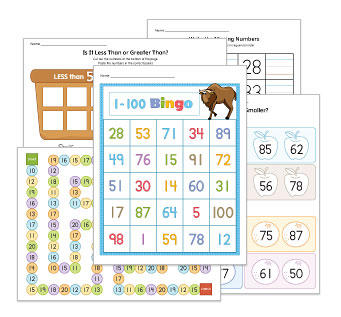
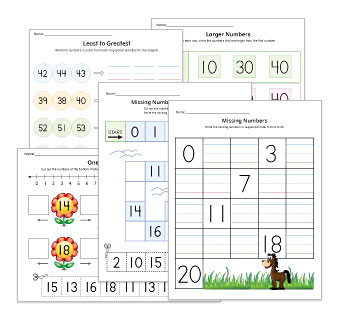
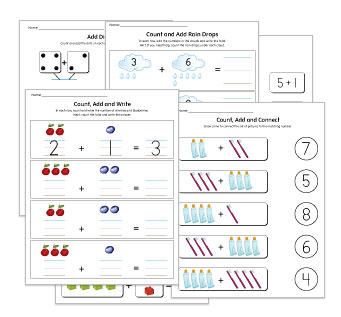
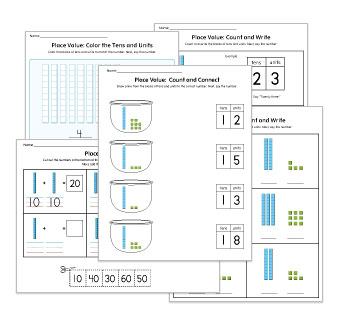
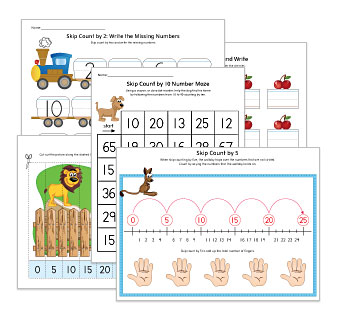
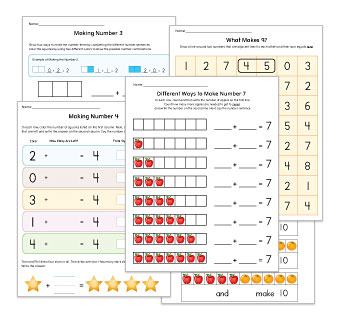
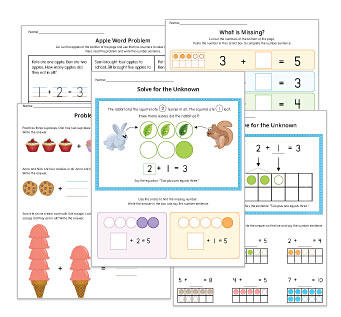
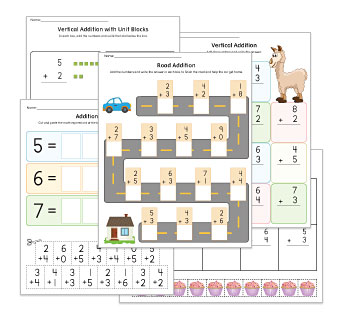
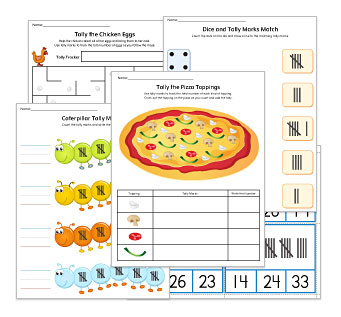
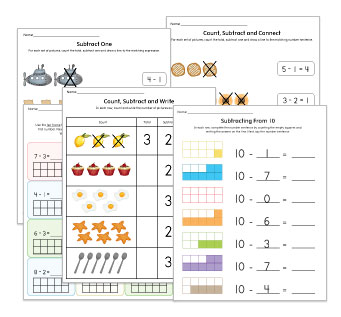
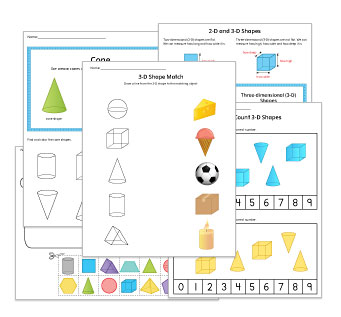
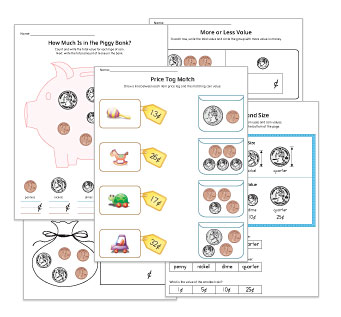
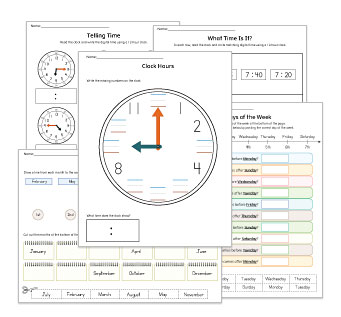
Plus, each level includes a practical Teacher Resource Book that contains tools to make teaching simple and easy-to-understand (including flashcards, concept description posters, and answer keys for applicable worksheets).
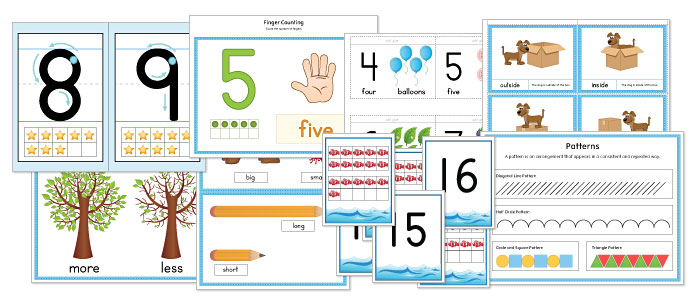
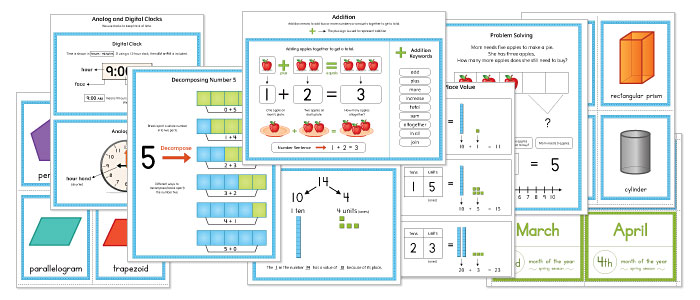
Check out the 3 Bonuses You Get Too!
- Bonus #1: FREE updates for 3-Months 12-Months!
- Download the latest edition of the Preschool and Kindergarten MTS Math Program.
- Bonus #2: Number Tracing Writing Mat.
- Numbers 1 - 9 writing mat (digital download).
- Bonus #3: Achievement Award.
- A "Program Completion" certificate to provide to your student.

PLUS★ ZERO RISK ★
100% Money Back Guarantee
MTS Math Program
Preschool
- Pre-K Student Workbook
- Pre-K Teacher Resource Book
- Answer Keys
- Bonus Materials
- 3 PDF Files | 433 Pages
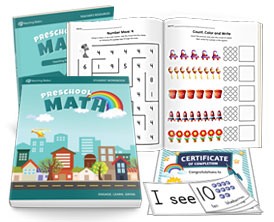
MTS Math Program
Kindergarten
- KG Student Workbook Part 1
- KG Student Workbook Part 2
- KG Teacher Resource Book
- Answer Keys
- Bonus Materials
- 5 PDF Files | 1051 Pages
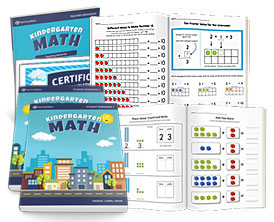
MTS Math Program
Preschool + Kindergarten
- Pre-K Student Workbook
- Pre-K Teacher Resource Book
- KG Student Workbook Part 1 & 2
- KG Teacher Resource Book
- Answer Keys
- Bonus Materials
- 8 PDF Files | 1484 Pages

Frequently Asked Questions
Does the program align with Common Core Standards?
Can I print copies of the book for different students?
The following explains the general policy for teaching multiple students:
- Small group or classrooms use: You may copy the program material for each student participating in a single classroom. Making copies for additional classes or school is prohibited. For multiple class use, please contact us for bulk licensing options.
- Home use: You may copy program material for use by multiple children within your immediate family.
For more information, please see My Teaching Station terms and conditions.
Can I purchase hard-copy books of the program?
Can I buy using a purchase order?
So Ask Yourself...
How amazing would it be to have a done-for-you pre-k and kindergarten resource like this to:
| Save you time. | |
| Simplify your teaching routine. | |
| Provide a clear pathway for students. | |
| Enhance math understanding with NUMBER SENSE. | |
| Make learning fun. | |
| Eliminate your search for quality worksheets. |
Plus, you can even use this program to supplement any curricula you are currently using to give your students a fresh variety of fun materials.
